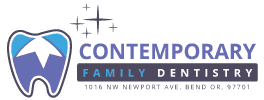Conventionally, dental implants and related solutions are meant to be neutral. While they don’t have any adverse effects on the teeth, they don’t contribute to their development. They are only meant to act as replacements or fillers. However, recent research has brought about new dental solutions that are actually active, dubbed dental biomaterials. Besides helping with dental replacement and repair, they do contribute to dental regeneration.
What are the benefits of biomaterials?
As much as dentists try their best to inform the patient of the best dental hygiene practices, the chances of them being non-compliant are very high. Besides, patients are not always aware of the acid profile of their mouth or the effects certain medications have on their dentition, such as drying their mouths.
This might not be an issue for people with healthy dentition and or those who try to maintain the threshold dental hygiene requirements. It can cause problems to those who already have dental problems, from the formation of dental cavities to the development of periodontal disease. In the case of patients who have undergone restorative dentistry, improper care could undermine the effectiveness of the applied solutions.
The benefits the active biomaterials provide help offset some of these risks. These benefits include:
- Remineralization – bioactive materials support the natural remineralization process. Instead of being inert like conventional placeholder solutions, they are constantly exchanging ions to rebuild teeth.
- Added protection – biomaterials can be great at rebuilding tooth structure. They help create an environment that repairs, seals and protects the tooth margin while supporting the restoration.
- Bioactive prevention – some dental restoration solutions come with downsides like the possibility of microleakage. Bioactive materials can be used to seal the margin between the restoration and the tooth. In turn, this prevents microleakage and protects the tooth from further decay.
The future of bioactive dental materials
Research into bioactive dental materials is still in its early stages. However, the concluded solutions are already showing a lot of potentials. The technology promises to help reinforce existing technology, help with tooth and tissue regeneration, and improve bone structure and strength. It is a sign that dental solutions no longer have to be a passive placeholder/filler but an active contributor to dental health. Further research into the field could allow patients to enjoy their rejuvenated smiles quickly and in a natural-looking way.
The only direction is up
The dentistry world has a lot to benefit from the development of bioactive dental materials. These materials promise to offset some of the drawbacks of conventional solutions. Luckily, there is nothing but room for more research and improvement in this field.



